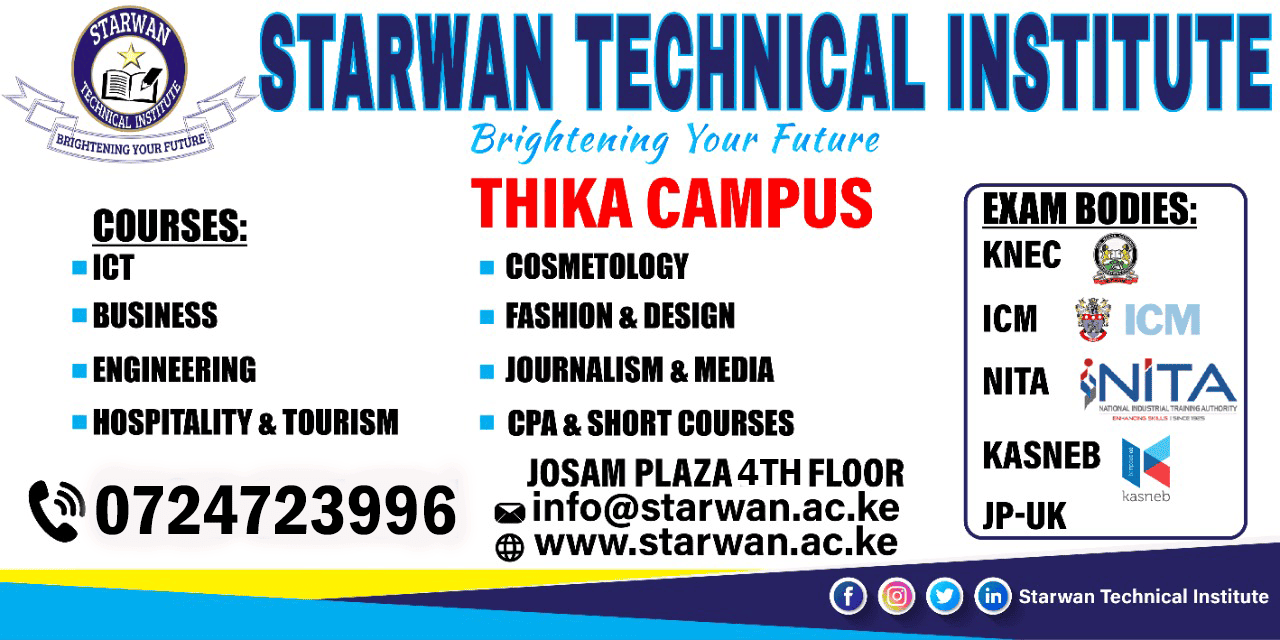We’re here to help you begin your journey toward skills and career success. Whether you need details about admissions, courses, intakes, or training schedules, our team at Starwan Technical Institute Thika is always ready to assist you.
Reach out to us today or visit our campus for personalized guidance.
Find Us
We are located at Josam Plaza, 4th Floor, Thika Town. near Hanton towers along Workshop Road near Mama Ngina Gardens
📍 Get Directions:
You can easily locate us using Google Maps. Click here
Call/SMS/WhatsApp: +254724723996/+254784544840
Email: info@starwan.ac.ke
Web: www.starwan.ac.ke
To apply online fill this form.
Connect With Us
Follow Starwan Technical Institute on social media to stay updated on new courses, intakes, and campus news:
Why Choose Starwan Technical Institute
- Accredited and recognized technical college in Thika
- Skilled trainers offering hands-on and market-relevant training
- Free computer packages for enrolled students
- Hostels with Wi-Fi and meals
- Flexible full-time, part-time, and online study options
Starwan Technical Institute Thika – where education meets opportunity. Visit us today and take the next step toward your future.

